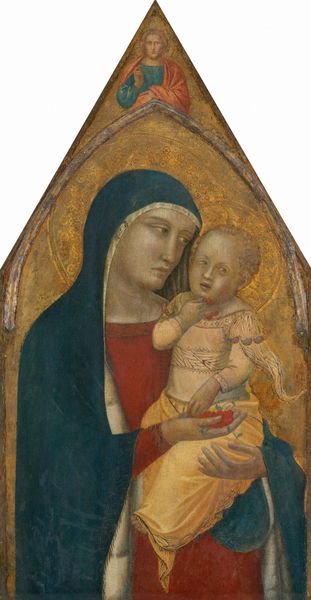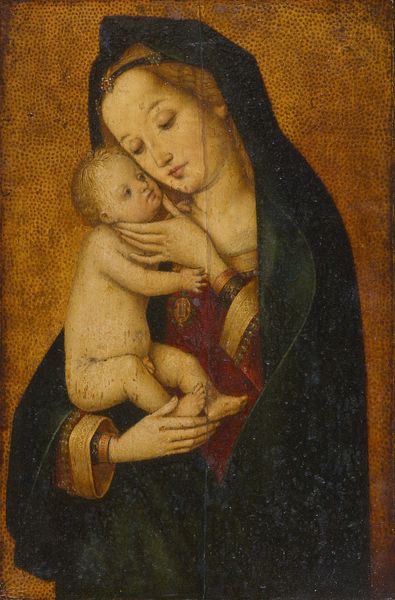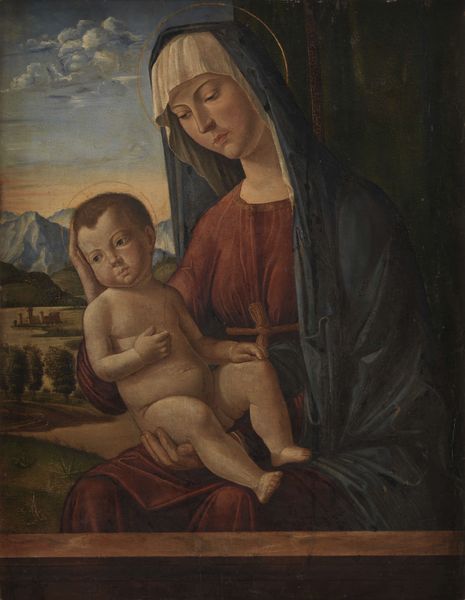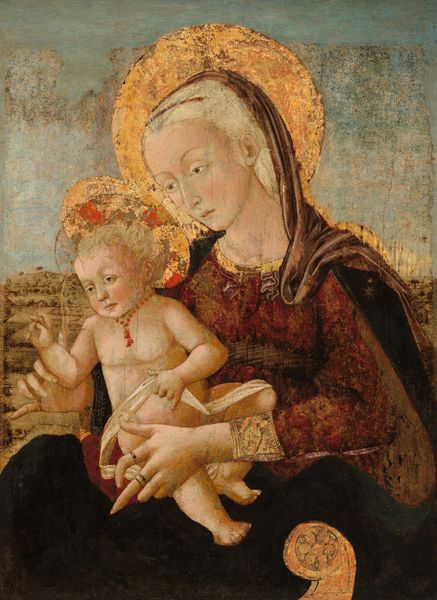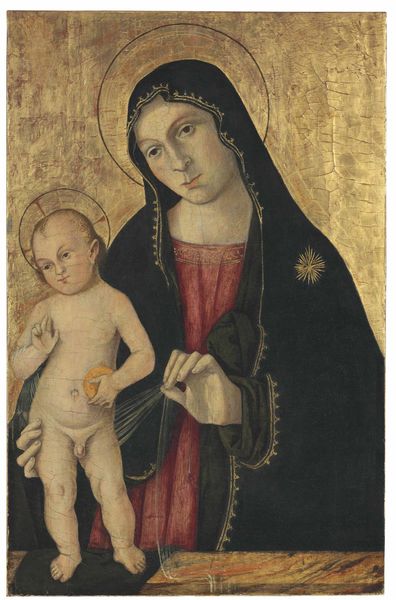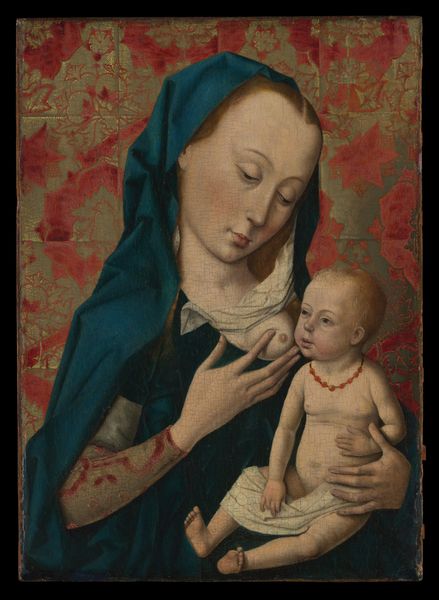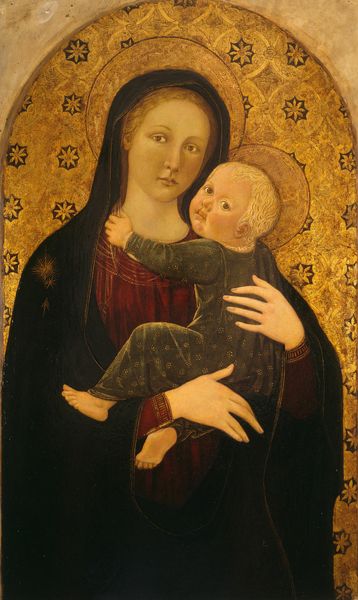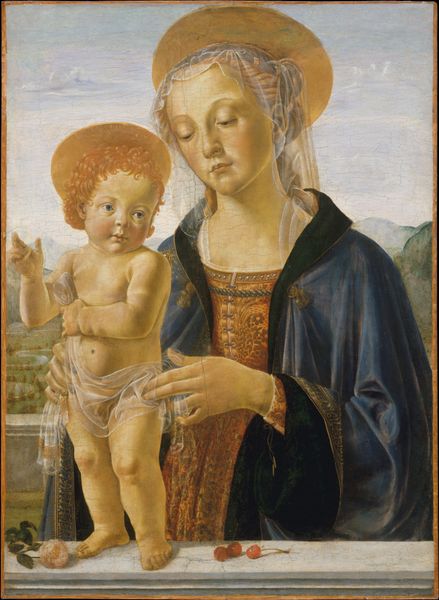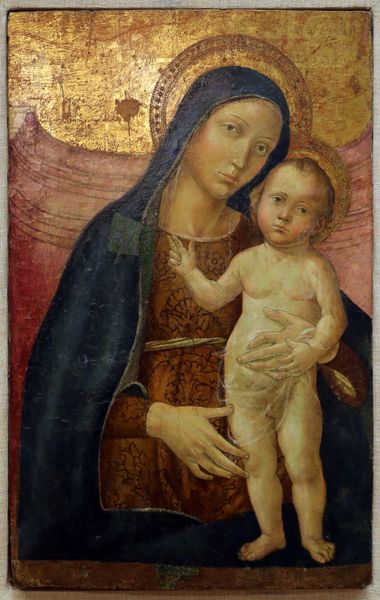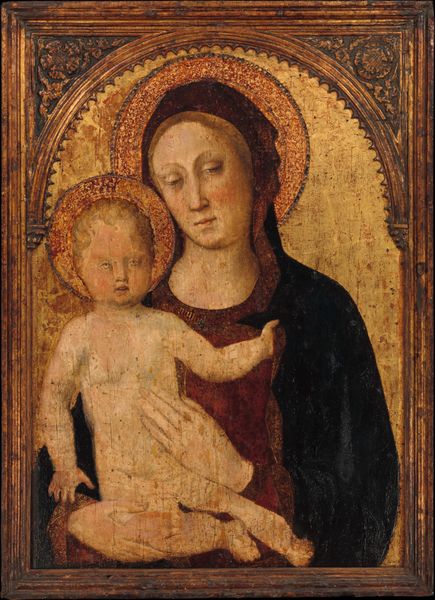
tempera, painting, oil-paint
#
portrait
#
tempera
#
painting
#
oil-paint
#
landscape
#
figuration
#
11_renaissance
#
oil painting
#
child
#
group-portraits
#
12_15th-century
#
history-painting
#
italian-renaissance
#
early-renaissance
#
portrait art
Dimensions: 49.1 x 36.2 x 0.6 cm
Copyright: Public Domain
Alvise Vivarini created this panel painting of the Virgin and Child around 1480 using tempera on wood. Tempera is a traditional painting medium involving mixing pigment with a water-soluble binder, often egg yolk. The careful layering of tempera creates a smooth, matte surface that’s quite different from the textures you might see in an oil painting. The choice of tempera would have influenced Vivarini’s approach. The medium dries quickly, requiring careful planning and a precise hand. The pigments themselves, ground from minerals and plants, would have been precious commodities, carefully sourced and mixed. The artist's skill in handling the materials would elevate the work beyond mere representation, infusing it with cultural and symbolic significance. While the image is of a sacred subject, the true art lies in the craft: the mastery of materials, the skillful application of paint, and the transformation of earthly pigments into a vision of the divine. Examining the materials and making processes allows us to appreciate the work in its historical context, challenging any modern distinctions between art, craft, and labor.
Comments
No comments
Be the first to comment and join the conversation on the ultimate creative platform.

